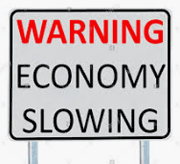| |
|
| |
|
 |
Supply
Chain by the Numbers |
| |
|
| |
- Oct. 5, 2023
|
| |
|
| |
|
| |
|
| |
Much Higher Minimum Wage for California Fast Food Workers; US PMI Shows Contraction again in September; Amazon Accused of Using Price Setting Algorithm; Uber Announces New Returns Service |
| |
|
| |
|
| |
| |
| s |
| ac |
| |
$20 |
|
That will be the minimum wage for most workers at fast food outlets in California, under legislation signed into law by Governor Gavin Newsome late last week. The legislation also creates a council that can approve further increases in the future. The state’s current overall minimum wage is $15.50 an hour and will increase to $16 an hour on January 1. The new hourly wage just for fast food workers will take effect on April 1 of next year. Employees who work at fast food restaurants with at least 60 locations nationwide are eligible. The action will in the end impact logistics, creating a new wage floor for workers in distribution centers.
|
|
|
|
| |
| |
|
|
 |
That is how many consecutive months that the US Purchasing Managers Index from the Institute for Supply Management (ISM) has now been below 50, with the September reading coming in at 49.0, as released from ISM early this week. That’s important because 50 is the line of demarcation. A score above 50 means US manufacturing is expanding, while below 50 signals contraction. What’s more, the New Orders Index remained in contraction territory at 49.2, though that was 2.4 percentage points higher than the August score, but overall still bad news for future US manufacturing activity. |
|
|
|
| |
| |
$5.00 |
|
That is the flat charge for a new service from Uber that will pick up packages being returned via the US Post Office, UPS or FedEx, according to an announcement this week. The new “Return a Package” service that allows users to send up to five prepaid and sealed packages per trip to one of the parcel carriers’ outlets. It is already available on the Uber and Uber Eats apps in nearly 5,000 cities. Packages sent via Uber must be valued at under $100 and weigh in at under 30 pounds, according to the company. All packages will be returned for a flat fee of $5, the company said, though Uber One members get a discount as part of their subscription benefits. |
| |
| |
| |
| |
| |
|
|
|
| |
 |
 |
| |
 |
![]() |
 |
|
| |
 |
Feedback |
|
|
|
![]()
|
No Feedback on this article yet.
|
|
![]() |
|
|
|
![]() |
 |
![]() |
 |
|
| |